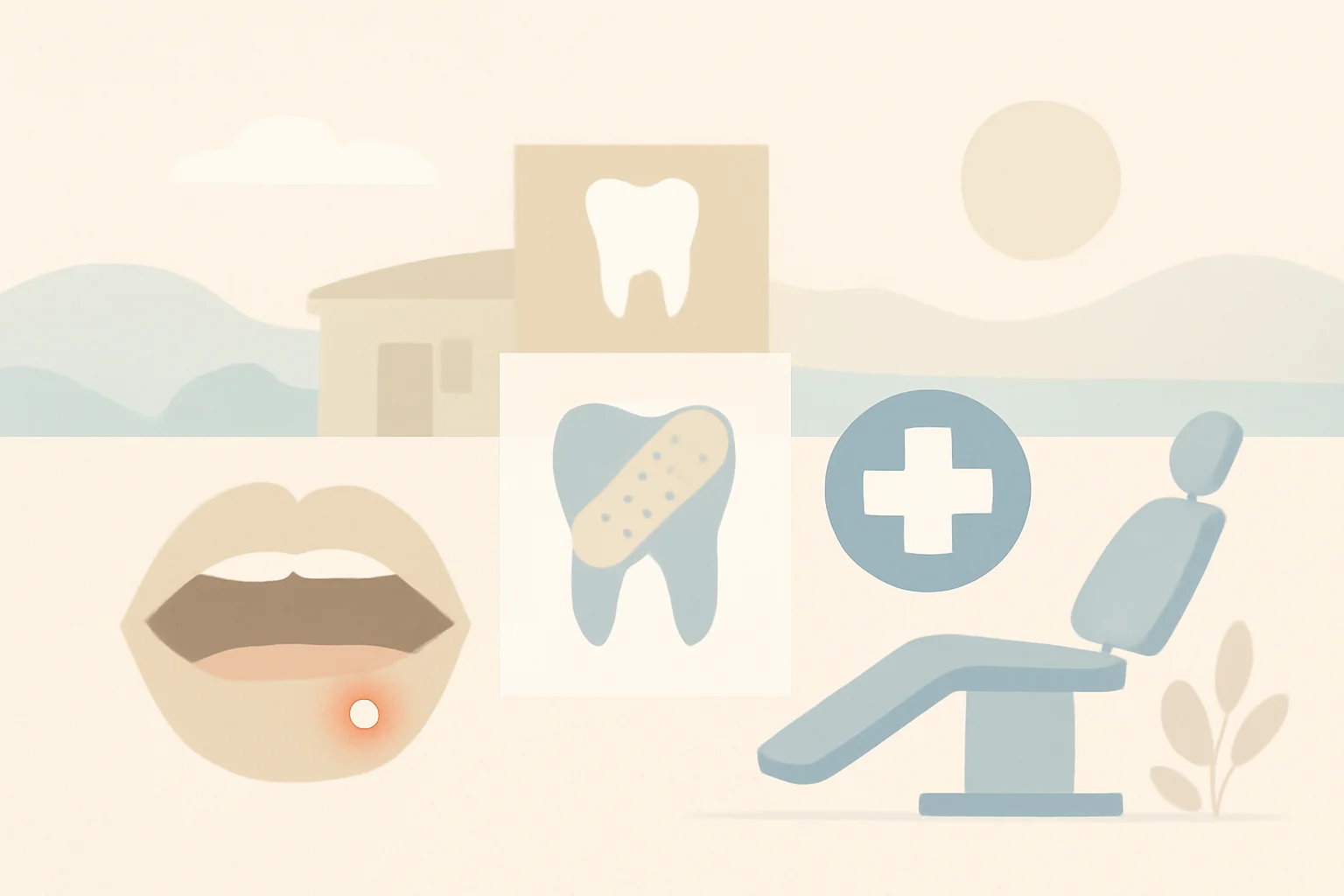
Aphthous Ulcer or Oral Surgery: Effective Solutions for Painful Sores
The aphthous ulcer and oral ulcer are among the most common painful lesions in the oral cavity, affecting many people’s lives. These discomforts can arise for various reasons, and although they often resolve on their own, their symptoms can cause significant discomfort. Aphthous ulcers, which are small, painful sores that appear on the oral mucosa, are typically round or oval and white or yellowish in color, while oral ulcers, which often appear on the gums or tongue, can vary in shape and may be pus-filled.
The appearance of aphthous ulcers and oral ulcers can be temporary or persistent. Many people experience these problems due to stress, hormonal changes, or even nutritional deficiencies. Medical literature also emphasizes that oral health is closely linked to overall health, so problems in the mouth can often indicate other health issues. Professionals in the field of oral surgery are increasingly focusing on uncovering and treating the causes of oral lesions, as these symptoms can often be not only painful but also significantly affect the quality of daily life.
Painful sores can cause difficulties in swallowing, speaking, and eating, which can lead to increased stress and anxiety. To establish a correct diagnosis, it is important for patients to be aware of their symptoms and to consult a specialist if necessary.
Aphthous Ulcer: A Brief Overview
The aphthous ulcer, also known as aphthous stomatitis, is a painful, round or oval sore that appears on the mucous membrane of the mouth. Aphthous ulcers are usually white or yellowish and have a red inflamed edge. These sores most commonly develop on the inner side of the mouth, on the gums, tongue, or the inner surface of the lips. The appearance of aphthous ulcers can be attributed to various causes, including stress, hormonal changes, nutritional deficiencies, as well as the consumption of certain foods, such as citrus fruits or spicy dishes.
Aphthous ulcers typically heal on their own within 7-14 days, but their pain can be extremely bothersome. To prevent their formation, it is advisable to maintain good oral hygiene, practice regular tooth brushing, and use dental floss. Additionally, it is important to reduce stress and pay attention to our diet, as vitamin deficiencies, particularly B12, folic acid, or iron deficiency, can also contribute to the appearance of aphthous ulcers.
If someone frequently has aphthous ulcers, it is worth consulting a doctor, as frequent occurrences may be linked to health issues such as autoimmune diseases or inflammatory bowel diseases. Various topical pain relievers and anti-inflammatory medications are available for the treatment of aphthous ulcers, but the best solution is prevention, which requires proper nutrition and stress management.
Oral Ulcer: What Causes It?
An oral ulcer, also known as an oral sore, is a lesion that can appear anywhere in the mouth, including the gums, tongue, and lips. Oral ulcers are often painful, and in most cases, they are pus-filled, indicating that an infection may be present. Such sores can develop for various reasons, including mechanical injuries, infections, inflammatory conditions, and certain diseases.
One of the most common causes of oral ulcers is tooth decay or gingivitis, which are the result of excessive bacterial growth in the mouth. Injury to the teeth or gums, such as from chewing hard foods or trauma during dental procedures, can also lead to oral ulcers. Oral ulcers often appear as a result of oral infections, such as those caused by the herpes simplex virus (HSV).
The treatment of oral ulcers primarily focuses on eliminating the underlying cause. In the case of an infection, antibiotics may be necessary, while pain relievers and anti-inflammatory medications can help alleviate symptoms from mechanical injuries. Additionally, maintaining good oral hygiene is crucial, as proper cleanliness can reduce the risk of oral infections.
To prevent oral ulcers, it is advisable to avoid foods that cause oral irritation, such as spicy or sour foods, and to pay attention to post-tooth extraction care. If someone frequently has oral ulcers, it is important to consult a doctor, as these symptoms may indicate other, more serious health problems.
Aphthous Ulcers and Oral Ulcers: How to Differentiate Them?
The appearance of aphthous ulcers and oral ulcers can be similar in many respects, but a few key differences can help distinguish them. Aphthous ulcers are generally round or oval, while oral ulcers can have a more varied shape. The typical appearance of aphthous ulcers is white or yellowish sores surrounded by a red inflamed edge, whereas oral ulcers are often pus-filled and painful.
Their pain can also differ: aphthous ulcers typically become painful gradually, with pain increasing during speaking or eating. In contrast, the pain of oral ulcers can appear suddenly and may also be a sign of infection. Aphthous ulcers most commonly appear on the inner surface of the mouth, while oral ulcers can also occur on the gums, tongue, or lips.
To establish a diagnosis, it is essential to monitor the symptoms and their duration. Aphthous ulcers generally heal within a few days, while oral ulcers can persist longer and may worsen without treatment. If symptoms are persistent or severe, it is always advisable to consult a doctor to receive appropriate treatment.
To maintain oral health, regular dental check-ups, good oral hygiene, and attention to diet are recommended. A healthy lifestyle not only helps prevent oral problems but also positively impacts our overall health.
Note: This article does not constitute medical advice. In case of health issues, please always follow your doctor’s advice.

